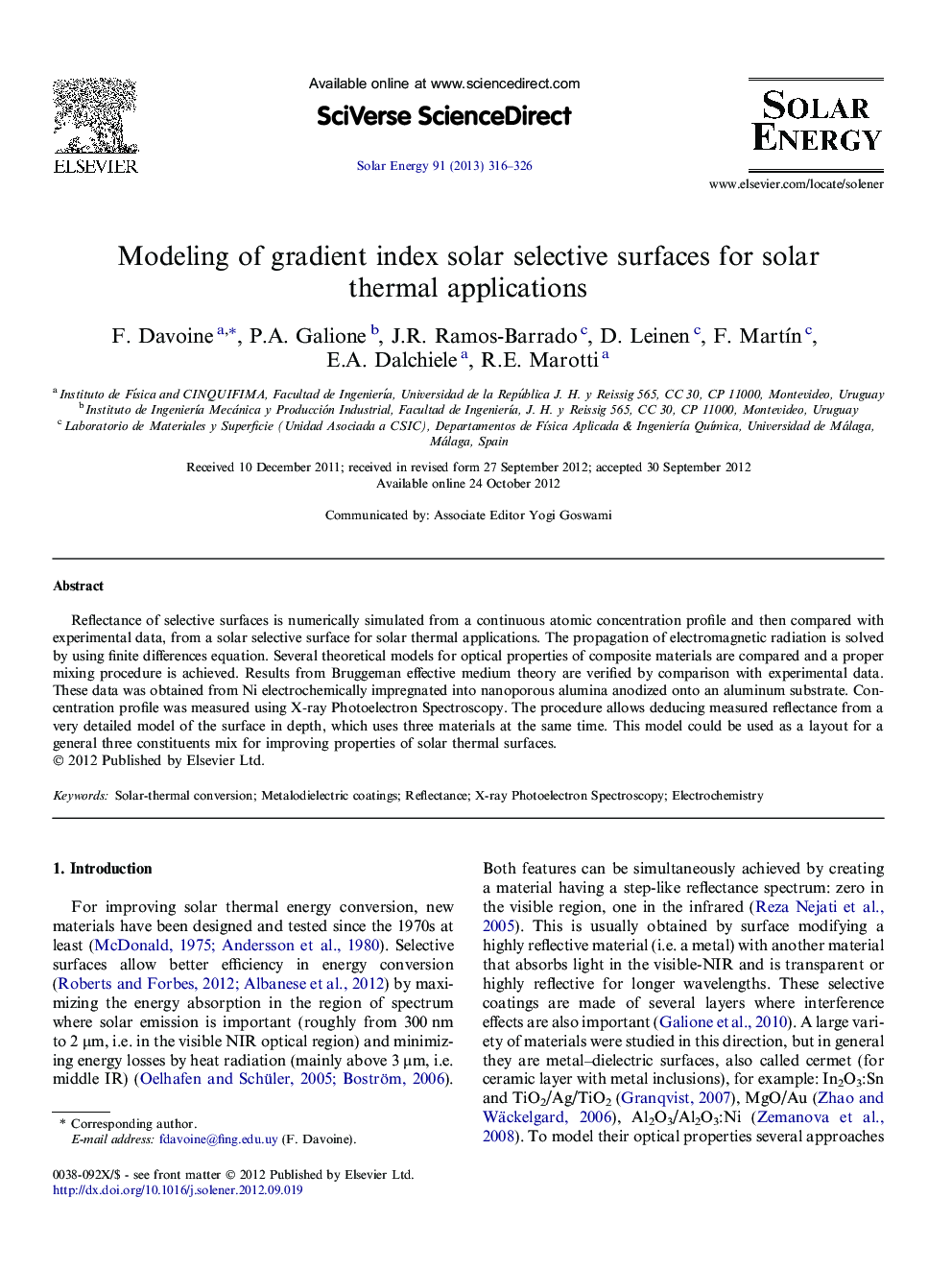| Article ID | Journal | Published Year | Pages | File Type |
|---|---|---|---|---|
| 1550419 | Solar Energy | 2013 | 11 Pages |
Reflectance of selective surfaces is numerically simulated from a continuous atomic concentration profile and then compared with experimental data, from a solar selective surface for solar thermal applications. The propagation of electromagnetic radiation is solved by using finite differences equation. Several theoretical models for optical properties of composite materials are compared and a proper mixing procedure is achieved. Results from Bruggeman effective medium theory are verified by comparison with experimental data. These data was obtained from Ni electrochemically impregnated into nanoporous alumina anodized onto an aluminum substrate. Concentration profile was measured using X-ray Photoelectron Spectroscopy. The procedure allows deducing measured reflectance from a very detailed model of the surface in depth, which uses three materials at the same time. This model could be used as a layout for a general three constituents mix for improving properties of solar thermal surfaces.
► Simulation of selective surface optical properties for solar thermal applications. ► Composite materials using three constituents Bruggeman effective medium theory. ► Reflectance deduction from atomic composition profile obtained from XPS. ► Model verified by experimental data.
